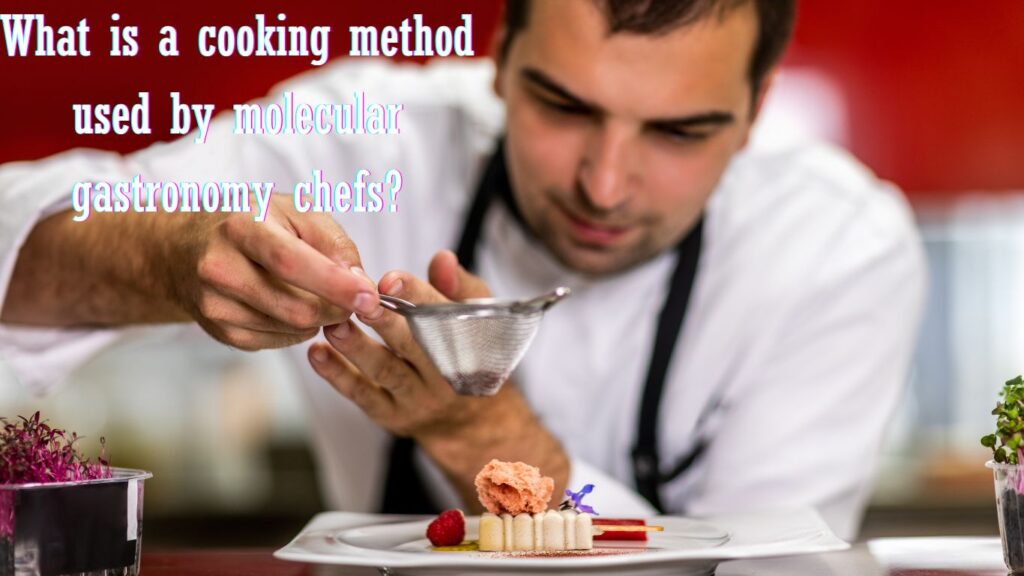
Introduction: The Art and Science of Molecular Gastronomy
Molecular gastronomy is a scientific discipline that combines physics and chemistry to create new textures and flavors in food—extraordinary dishes that are as pleasing to the palate as they are a feast for the eyes. This method has revolutionized not only the way we think about food but also how it’s presented on our plates. This article delves deep into the avant-garde of cooking, exploring the primary techniques that make molecular gastronomy a standout in the culinary world.
Understanding Molecular Gastronomy
Molecular Gastronomy: Defining the Discipline
Molecular gastronomy is the scientific study of the physical and chemical processes that take place while cooking food. According to Hervé, this field focuses on three main aspects: the social and cultural aspects of cooking, the artistic side of culinary activity, and the technical skills and techniques needed for cooking.
The Pioneers of Molecular Gastronomy
The term “molecular gastronomy” was initially coined by Hervé This and Nicholas Kurti in the late 20th century. Their curiosity and scientific approach laid the foundation for many of the techniques used in today’s kitchens. These chefs and scientists were the first to ask not only “how” to cook something but “also why” ingredients respond to different cooking methods in the ways they do.
The Techniques of Molecular Gastronomy
Spherification: Creating Flavorful Orbs
Spherification is a culinary technique used to transform the liquid into small spheres resembling fish eggs in texture and appearance. The method was popularized by Ferran Adrià and his team at El Bulli in 2003. These spheres burst in the mouth and release a vibrant, flavorful liquid. Spherification can be direct, where calcium is added to the product and then bathed in a sodium alginate bath, or reverse, which involves submerging the product in a calcium bath and then coating it with sodium alginate.
Emulsification: The Art of Airy Sauces and Foams
Emulsification is a widespread technique in molecular gastronomy that involves mixing two liquids that don’t usually mix, such as oil and water. Stabilizers such as xanthan gum can help create exceptionally stable emulsions that can be turned into foams or airs with the help of a whipping siphon or blender.
Qualification: Structuring the Liquid
Gelification involves transforming liquids into gels, commonly using agents like agar-agar, gelatin, or carrageenan. This technique allows chefs to present known flavors in new textures, contributing a unique mouthfeel and presentation to dishes.
Deconstruction: Breaking Down Classic Dishes
Deconstruction is a method for presenting familiar dishes in new ways. It involves breaking down dishes to their core elements and reassembling them in a way that changes their standard interaction on the palate but retains the recognizable flavors and textures.
Frequently Asked Questions
How does molecular gastronomy impact the flavor of food?
Molecular gastronomy techniques can enhance flavors by transforming ingredients into new forms that highlight their inherent qualities in unexpected and intensified ways.
What are the most commonly used tools in molecular gastronomy?
Molecular gastronomy often uses tools like nitrogen tanks, spherification kits, precision scales, and temperature-controlled water baths.
Is molecular gastronomy safe?
When performed correctly using appropriate ingredients and methods, molecular gastronomy is perfectly safe and can introduce diners to a whole new world of culinary experiences.
How can someone get started with molecular gastronomy at home?
Exploring molecular gastronomy by starting with basic techniques like spherification or emulsification and using kits designed for home use is a good idea.
What are the benefits of molecular gastronomy in modern cuisine?
Molecular gastronomy elevates the dining experience by blending art and science, encouraging chefs to explore new culinary landscapes and diners to enjoy unique and interactive dishes.
Where can I find molecular gastronomy ingredients?
Specialty culinary stores and online platforms dedicated to molecular gastronomy supplies are good places to start.
Conclusion: The Future of Cooking
Molecular gastronomy continues to push the boundaries of culinary science, creating a bridge between the dining table and the science lab. By understanding and applying its core techniques, chefs can unlock new dimensions of flavor and presentation, making each meal an adventure in taste and technology. As this discipline evolves, it promises to further blend the


